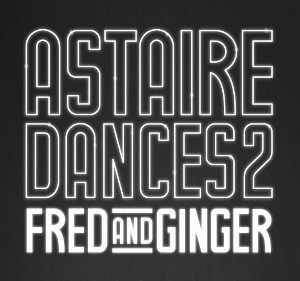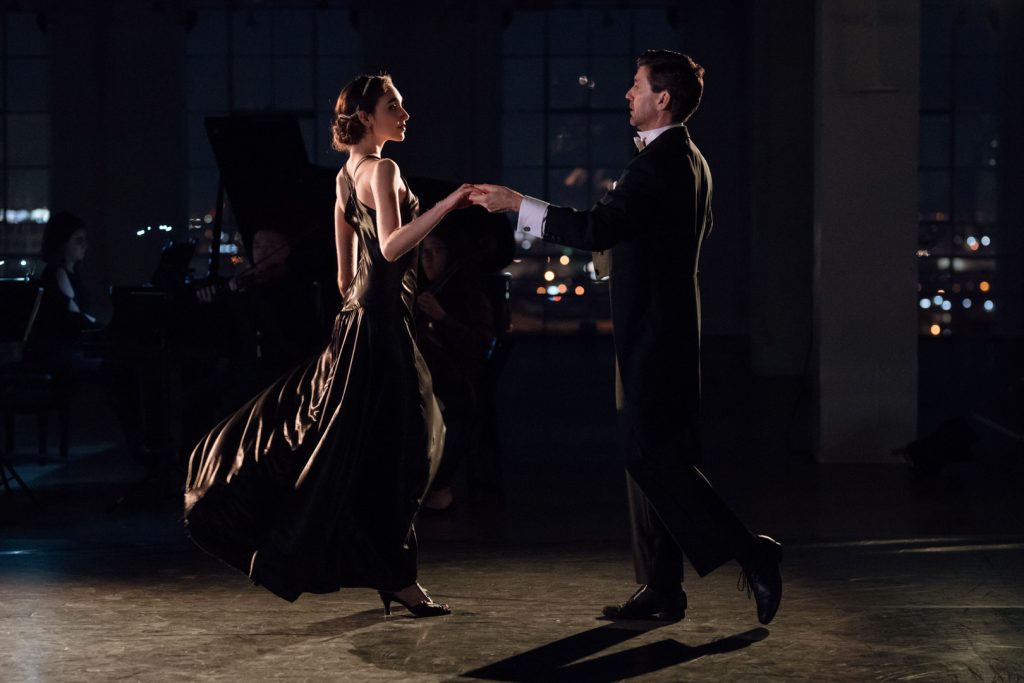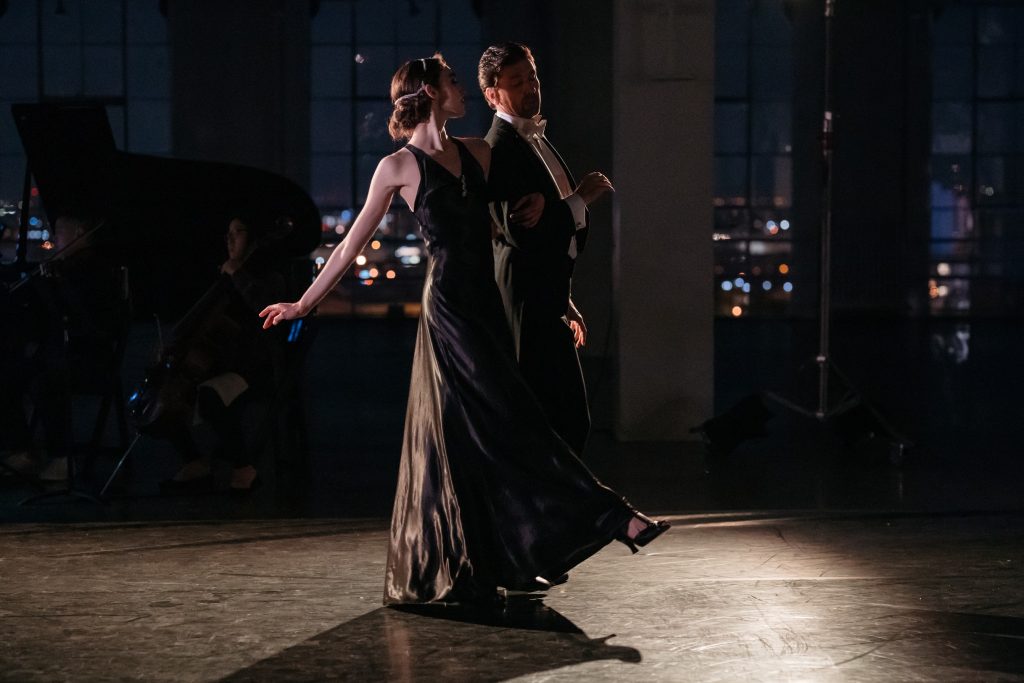LET’S FACE IT:
THIS IS MUSIC AND DANCE
The classiest dance company in town offered its longest and most romantic program yet — a combination of Balanchine and Astaire, two of the 20th century’s greatest and most influential choreographers. The great ballet choreographer George Balanchine compared Fred Astaire to Bach, and Baryshnikov claimed Astaire gave him an inferiority complex. (“I had some ballet training but didn’t like it,” Astaire said. “It was like a game to me.”) American Contemporary Ballet’s program, Astaire Dances 2: Fred & Ginger, highlighted the beloved movie star and his extraordinary talent and contributions as a dancer and choreographer. This lovely event proved what Astaire himself said: “I don’t make love by kissing, I make love by dancing.”
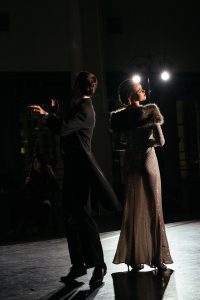 Utilizing the songs of George Gershwin, New York City Ballet’s co-founder George Balanchine saluted Astaire in 1970 with a sumptuous amalgamation of Fred’s style — starkly original and sophisticated moves — with the best of classical ballet, showing the way in which both forms express love.
Utilizing the songs of George Gershwin, New York City Ballet’s co-founder George Balanchine saluted Astaire in 1970 with a sumptuous amalgamation of Fred’s style — starkly original and sophisticated moves — with the best of classical ballet, showing the way in which both forms express love.
For the first half, Artistic Director Lincoln Jones removed the corps de ballet numbers from Who Cares?, giving us eight pieces in their original order, while Hershy Kay’s orchestrations were given opulent new arrangements by James and Kathy McMillan for a chamber septet, which sat directly behind the playing area. With two stories of unadorned ceilings and paned windows at ACB’s new digs on the eleventh floor of Cooper Design Space, the hollow space actually served to make the music softly reverberate as if being transmitted from the 1930s — under pianist Alin Melik-Adamyan’s tight but fluid musical direction, the modern ragtime band alone was worth the price of admission.
But to have a quartet of elegant dancers — one man, three women — executing Balanchine’s original moves a few feet from our seats positively thrilled. With the aid of Balanchine Trust répétiteur Zippora Karz, Mr. Lincoln recreated the splendor, swing and refinement that makes these jewels timeless. The winsome Michelle DeAngelis offered strong skipping, magnificent pirouetting, and hip-thrusting joy soloing in “I’ll Build a Stairway to Paradise”; Elise Filo and Noah Guthier were gloriously and wistfully romantic in “Embraceable You” (you gotta love that he snaps while she’s en pointe); Filo’s awesome turns in “My One and Only”; Sarah Bukowski’s seductive and jazzy grand battement and relevé in “Fascinatin’ Rhythm”; and Guthier’s perfect entrechats in “Liza.” Guthier looked at the floor a few times, and his lifts were a little wobbly, but what he lacked in confidence and strength he made up for in emotion and elegance. For the ensemble finale, “Clap Yo’ Hands,” the women looked splendid in Ruoxuan Li’s red, purple, and teal vintage trapeze costume dresses with ruffled bottoms.
For “intermission” music, Mann-Wen Lo (violin), Stella Cho (cello), and Ms. Melik-Adamyan offered “Winter” from Piazzolla’s The Four Seasons of Buenos Aires (Estaciones Porteñas) an infectiously rhythmic, moving and melancholic tango composition that upped the enchantment factor. Just prior to Act I, the same Piano Trio gave us Café Music, Paul Schoenfield’s highly entertaining chamber piece in the styles of Broadway, gypsy, Viennese, light classical, and more. Later for an interlude, Ms. Lo’s virtuosic skills astounded during a humorous composition (Quodlibet for Piano and Violin) written by Louanne Homzy, whose original arrangements and overture just for ACB’s scintillating septet swept us up in a swell of color and charisma. Arranger Peter Myers did equally magical work on three of the Astaire Dances. Milling about before the show, taking in the view while sipping a glass of complimentary wine, the air was filled with Morgan Jones’s passionate cocktail-time solo jazz piano.
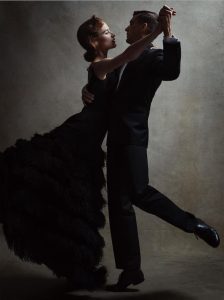 Irving Berlin, Jerome Kern and Gershwin were the composers of the songs in the second half, which had Jones not just recreating five Astaire/Rogers routines from five of their ten films, but also performing in tails as the man whose legs were insured for one million dollars. The dances elucidated how Astaire used movement with style and panache to urge the plot along.
Irving Berlin, Jerome Kern and Gershwin were the composers of the songs in the second half, which had Jones not just recreating five Astaire/Rogers routines from five of their ten films, but also performing in tails as the man whose legs were insured for one million dollars. The dances elucidated how Astaire used movement with style and panache to urge the plot along.
Everyone was all bedecked in costumes matching those worn in the films. When actress Leslie Caron told Astaire that she wanted to create her own costumes for Daddy Long Legs, he said: “Okay, but no feathers, please,” recalling the troubles he had with one of Ginger Rogers’ elaborate ostrich feathered gowns in a dance from Top Hat (a feather broke loose from her dress and stubbornly floated mid-air around Astaire’s face). Yet for ACB’s “Cheek to Cheek,” here comes Ms. Filo in Li’s glorious recreation that did indeed molt, but never got in the way as the couple proffered tantalizingly tight hug twirls. The “feathers” were cleaned up by push broom from a fella dressed in a foliage green 40s’ flight suit — nice touch.
Another nice touch was having two actors perform lines from the Astaire/Rogers films, both as a way to set each scene, but also to give Mr. Jones a chance to change costumes. While Nikiya Palombi and Adam Blodgett — who could sing, roller skate, and looked swell — were a bit mannered, and could have been a bit more rapid-fire in their delivery, it was divine when their funny dialogue melted directly into dance. (When she enters tardily, he says, “Well, isn’t it the latest thing.”)
For “Let’s Call the Whole Thing Off,” Bukowski and Jones took on a truly difficult task: tapping in roller skates from the film Shall We Dance, a scene which purportedly took 150 takes, so heaven knows it’s difficult to pull off. Yet while Jones has improved in sophistication and style from last year’s Astaire Dances, he still glances at the floor quite a bit, and remains tenuous here. Even at his best with the ever-charming Rochelle Chang in “Never Gonna Dance” (Swing Time), Jones seemed emotionally detached. He can do the work, but this style is not his métier, as it was for the ridiculously elegant Hungarian Zsolt Banki, who performed the role of Astaire for ACB five years ago.
But, boy oh boy, did Jones ever look great with Cara Hansvick as the characters decide to promenade instead of ending it all in “Let’s Face the Music and Dance.” Zach Titterington’s lighting design was fairly washed out at the matinee, but here the couple was backlit by nature’s celestial cloud pattern streaming in through the windows. We were even offered sunglasses should the glare become too powerful. I thought about using them earlier, however, for the overwhelming sublimity of Brittany Yevoli’s close-contact circulation with Jones in “Smoke Gets in Your Eyes.”
ACB now programs year-round, so don’t be sad that the sold-out run closed last Sunday. This may be a review of record, but ACB, like Astaire, will never go out of style.
photos by Darren Dai
promo photo by Victor Demarchelier
Astaire Dances 2: Fred & Ginger
American Contemporary Ballet (ACB)
Cooper Design Space, 860 S. Los Angeles St., 11th floor, DTLA
ends on February 17, 2019
for future tickets, visit ACB Dances
